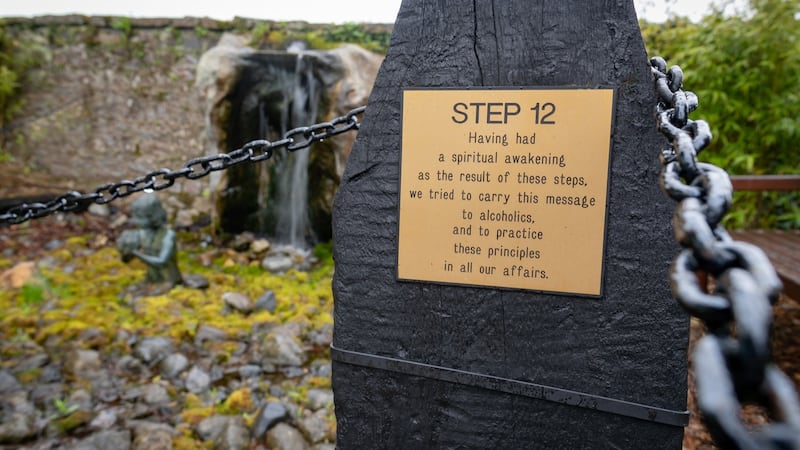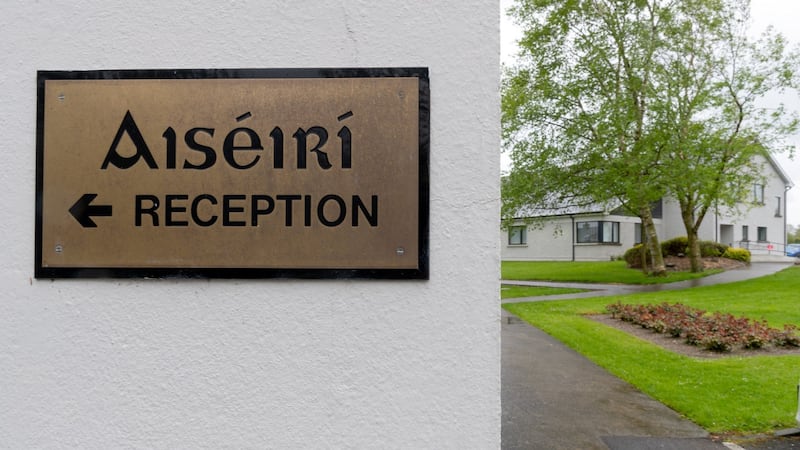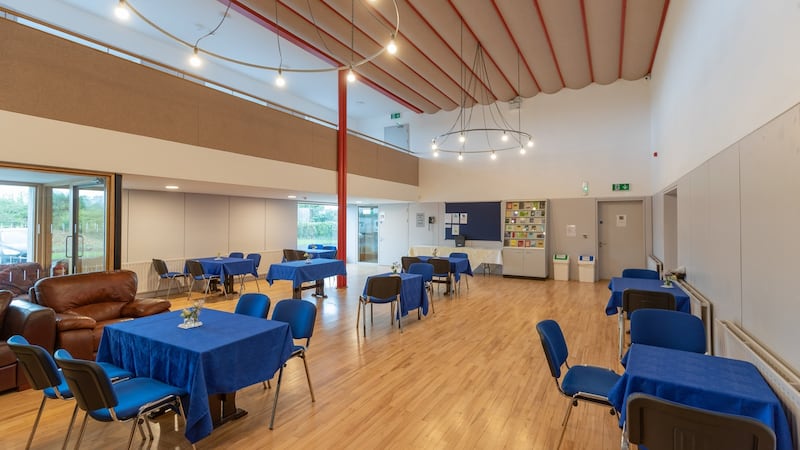A stint in rehab has become shorthand for something celebrities do when they've been caught ingesting substances they shouldn't, or when they want to escape the heat from the paparazzi for a while. Open any tabloid newspaper or celebrity website almost any day, and you can read how Selena Gomez is staying away from alcohol after her stint, or how Ant McPartlin is doing well after his. It's no wonder the phrase conjures up images of spoiled celebrities enjoying a few weeks of peace surrounded by fluffy bathrobes, aromatherapy oils and detox facials.

But the reality of what goes on behind the doors of Ireland’s rehab clinics, or – as they’re more correctly termed – addiction treatment centres is very different. There are no fluffy bathrobes, no caviar-based facials, and if there are any celebrities, they’re treated just like everyone else. Instead, there is a lot of hard work, empathy, talking – and a series of slow and difficult realisations.
"You'll have a surgeon sitting beside a schoolteacher sitting beside a stay-at-home parent sitting beside a guy who's homeless in Cork sitting beside a lad who's just out of prison. There's no 'typical addict', and everybody gets treated with the same respect and compassion. It could be your sister, your dad, your brother. Addiction doesn't care who you are," says Sara Cassidy, team lead at Aiséirí Cahir in Co Tipperary.

All the same, you could easily mistake Aiséirí for a comfortable country house hotel. A handsome, white-painted Georgian building with tidy gardens is surrounded by more modern outbuildings, where it’s more than possible to imagine gentle yoga sessions taking place. Inside, the tall ceilings, soft carpets, plush floral furniture and tea and scones laid out on trays for visitors reinforce the impression– which lasts until precisely the moment Noelle Ryan starts showing me around.
“This is where we ask residents to provide a urine sample when they first arrive,” she says, showing me a small toilet on the ground floor. “We need to start off on an honesty path, and sometimes there can be a temptation to twist the truth about what’s in their system. And we need to know before we can start detoxing them.”
Detox services
Ryan looks after the medical needs of residents in recovery, as well as overseeing the detox services it has offered since 2016, making Aiséirí’s the country’s only addiction recovery centre with an in-house detox facility. This means that people who need to detox can spend three to 15 days doing that here, before their 28 days in recovery begin. Aiséirí is not an emergency admission type setting, and some residents will need to start cutting down on their own first, she says.
Ryan is clear that addiction is an illness, and speaks with compassion about the people she treats. “To see someone who needs to have a bottle of wine in their system just to come to an appointment is so, so sad.”
A decade ago, most people came to Aiséirí seeking alcohol treatment, and while levels of alcoholism remain high with both genders, rates of drug addiction – particularly heroin and benzodiazepine – “have gone through the roof” in recent years, says Sara Cassidy.
The day at Aiséirí, which follows the 12-step Minnesota model, runs from 7.30 in the morning until 7.30 at night, offering a structured programme of individual therapy, group therapy, lectures, workshops and meditation. The cost of a 28-day stint is €6,804, a rate that hasn't increased in a decade.

In the dining room, lunch is under way for the 17 residents and staff. On the menu is mushroom soup, followed by roast pork and roast potatoes. It looks – and tastes – delicious. Residents wearing green aprons over their jeans and tracksuits dish up steaming plates of vegetables and pass around jugs of gravy. I sit with the staff and counsellor Robin Hawthorne, and we talk about holidays and what’s on TV. But the five or six other tables around us are largely silent. At one point, a woman gets to her feet and reads a few lines in a shaky voice about the effect of alcohol addiction. When she sits down, a few people thank her, and then the silence resumes.

Family day
Is it always this quiet, I ask Hawthorne afterwards. It’s Wednesday, he explains, which means it’s family day, a day when relatives and friends come and talk about the effect their loved one’s addiction has had on them. Some of the residents are having a hard time processing what they heard.
“Family day is an enormous part of their treatment. The family members will come and they get an opportunity to say, in a safe place, what it’s like for them. And it’s really tough,” says Cassidy.
“The families are often more sick than the residents. They’re really, really unwell. They may have been verbally abused, potentially physically abused, financially abused. It’s really intense, but they often have no idea how it happened.” They’re like the proverbial frog in boiling water, she says.

After lunch, I go to the television room where Neal*, a thin, handsome man in his early 60s with deep brown eyes and a soft voice, is waiting to talk to me. Originally from the Netherlands, he’s reaching the end of what will have been 32 days in Aiséirí, and will return in two days to the home he shares with his wife. She was here today, and it was “very good”, he says. “She’s very strong. She’s well able to tell me her boundaries.” She told him there was “still some love there”, so he is hopeful that bridges can be built.
Six weeks ago, she asked him to leave the house, after she had discovered his addiction to oxycontin and heroin. By then, he had reached a point where, "I wanted help," he says, "but nobody wanted to help me because I was cross-addicted to two substances."
He began his detox on his own in the place where he was staying, spending five days in agony. “My older son bought my pills for the first time” to help him come down. And then he arrived in Aiséirí on April 10th. “I wanted it. I threw in the towel. I couldn’t fight the addiction any more. The first step of the programme is to accept that I am powerless over addiction and my life has become unmanageable. I’ll be doing that step for the rest of my life.”

Neil’s first rehab experience was in 1993 for alcohol, he says. “I was clean and sober from then until 2012. I went nearly 20 years without even a drink.” But six years ago, a perfect storm of stressors – the downturn in the economy that affected his business, his two boys leaving home – found him going to his GP seeking prescribed pain medication “and I’ve been using on and off since”.
He looks 10 years younger today than he did when he came here in April, he says. “You can ask the kitchen staff.”
What he has learned here for the first time is that his family have “exactly the same feelings I do, whether it’s fear, resentment, loneliness, hate, love. They experience the same things because of me. And if I recover, they will recover.”
Tenfold impact
Robin Hawthorne says that, in the average family, a minimum of 10 people are affected by the impact of one person’s addiction. “So across society as a whole, you can multiply the impact of addiction out tenfold. But families often don’t recognise the impact it’s having on them, or the impact their behaviours are having on the addicted person.
“The phrase we use is ‘enabling addiction to foster’. We’re not saying family members are to blame. A lot of what they do would be rational behaviours in any other context – paying off a debt to help a relative for example, or encouraging them to take part in social events. The problem is that addiction is not a rational disease.”

Jason*, a thin, polite and obviously bright young man in his 20s, is feeling positive after his session with his family today. His parents, his brother and his girlfriend all came to see him. “It was tough to hear” what they had to say. “There was a lot of sadness there. I knew myself I was putting them through a lot, but today I felt it, and let it sink in. It was way more good than bad.”
He was addicted to weed, and “my life became a mess really”, he says. People don’t think of weed as addictive, but “it was for me. I was on it every single day”.
His problems started when he got mumps during his first year in college, and spent six or seven weeks alone in his room recovering. “Before then, everything was decently on track. I was doing arts, and wanted to go on to study psychology. When I got sick, I deferred from college, and spent a lot of time in my room, pondering on everything and not really sleeping. It was all negative thinking, probably because I was on 14 or 15 tablets a day.”
Marijuana habit
He was a social drinker and a recreational marijuana smoker up to that point, but once he recovered, his marijuana use spiralled out of control and became a daily, and then an almost constant, habit. “I spent less and less time at home. My family didn’t realise the extent of everything until the last 12-18 months. I wasn’t going to college, I would jump from job to job. I lost my drive. I hated myself. I used to know who I was, and be comfortable with who I was, but that all went. Even if I was with people, I wasn’t with them, I was lost in my own negative thoughts. I would over-analyse everything, I’d look into the last blade of grass on everything.”

When his parents suggested a treatment centre, “I just said ‘yeah’ to everything, not really knowing what I was getting into. I just wanted something to change. I knew I needed something. The first few days were very tough. The longest I’d gone without smoking before coming in here was not even 24 hours. My anxiety went through the roof, and all my emotions started to come back. Anger was the only emotion I could show when I was using, and now I had to feel emotions again.”

Now, he’s feeling a lot of guilt and shame for what he put his family through “but it’s emotion, and at least I know I can feel emotion”.
Heroin habit
Jasmine* is also in her 20s. She left school in first year after a friend died from addiction, and began drinking and doing drugs from the age of 14. She plays with her hair as she describes, softly, how she started on heroin when she was 18, after she returned from Australia, and found a lot of her friends were on it.
This is her second time at Aiséirí . She was here at 21, and managed to stay clean for over a year after she left. “After a year, I stopped going to the meetings. I thought I was grand.” This time, she detoxed for 10 days before she began her recovery. “They leave you in detox until you’re ready, and I still wasn’t sleeping. I was in a bad way,” she says.

Now, she’s in a good place, “a much better place than even I was a week ago. The work they do with you here is just magic. When I started the programme for the first week and a half, my head was still focused on using. I couldn’t think about anything else, I couldn’t focus on the future.
“And then I went from wanting to use, to thinking about my future, and thinking that I can have a great life, and never wanting to use again. When I came in here first, I couldn’t even look in the mirror. There’s low self-esteem and there’s no self-esteem and I had no self-esteem. I still have a bit to go, but I’m getting there. They really do work miracles with you in here.”
*Names of residents have been changed to protect their privacy




















